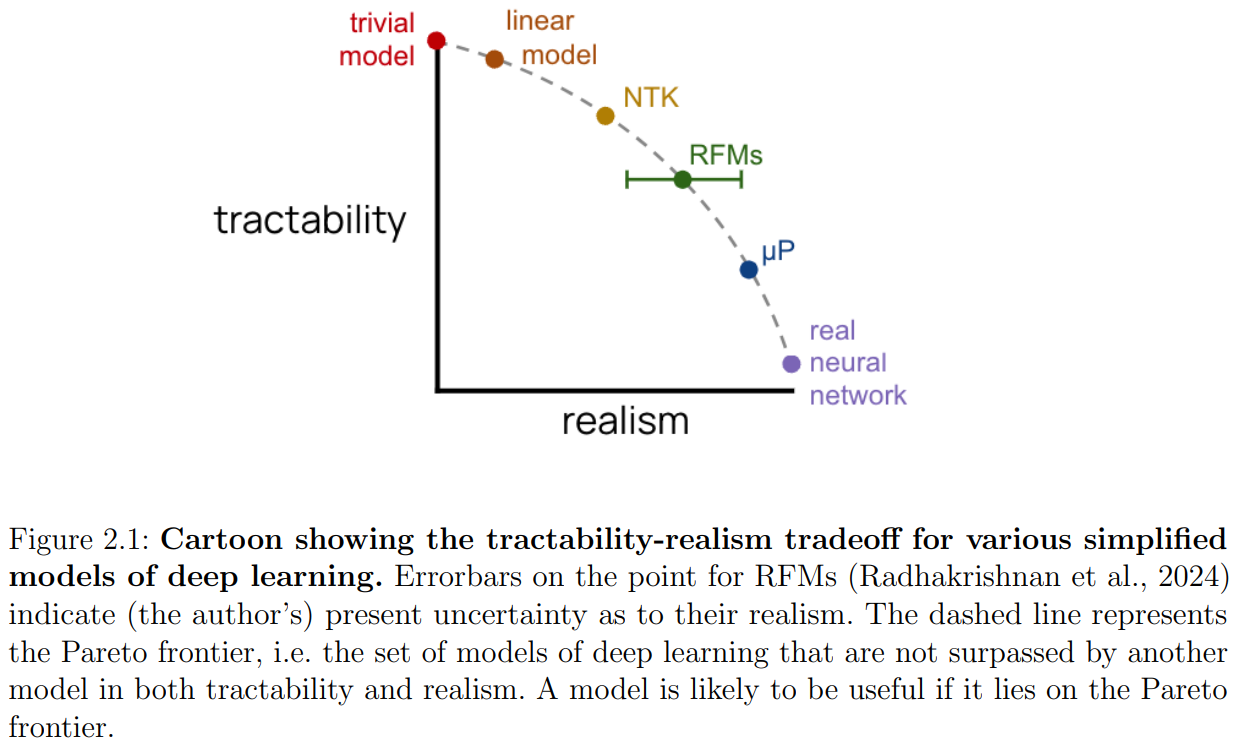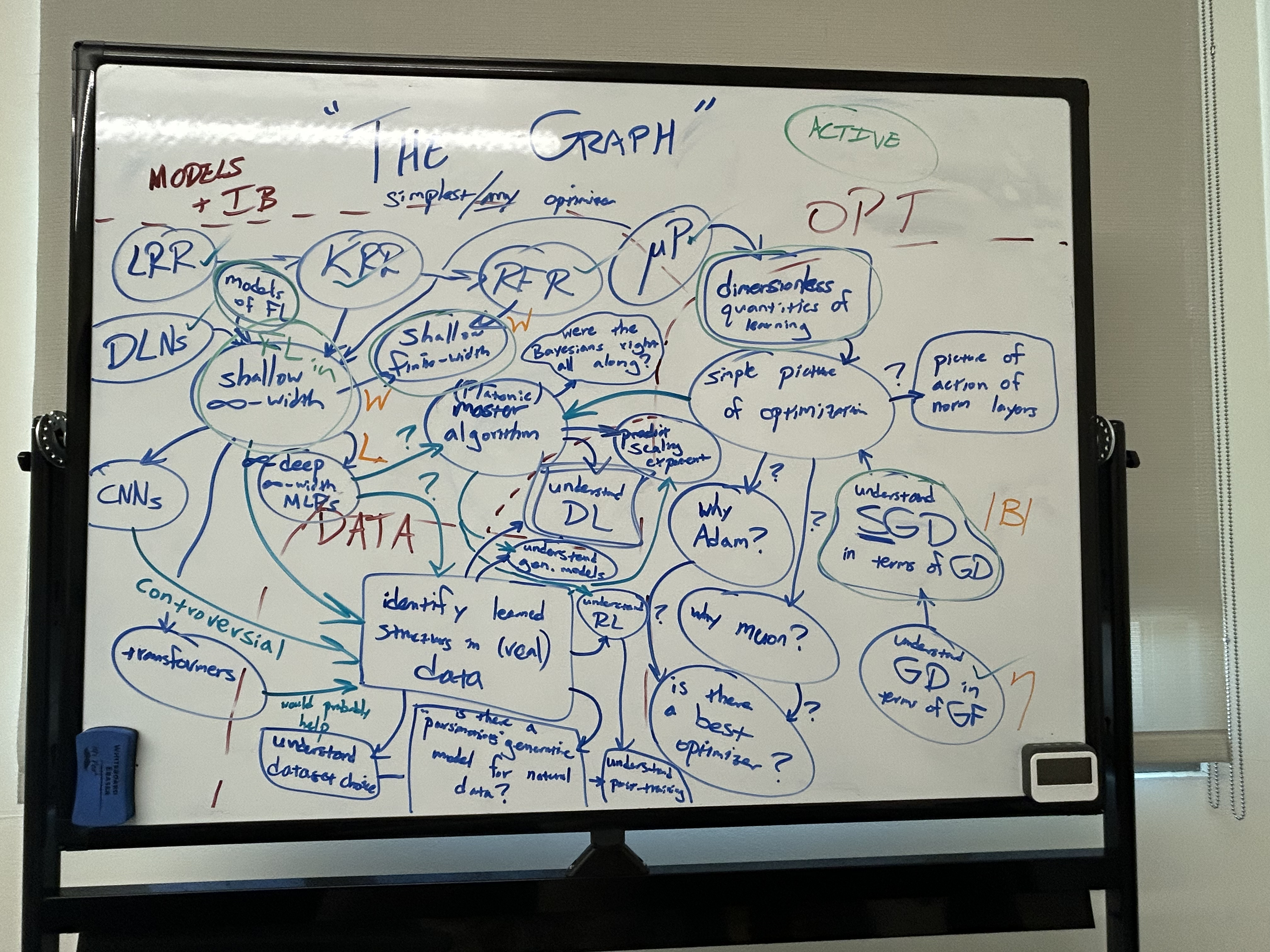One way I think about deep learning, inspired by discussions with Dhruva, Joey, and Jamie, is that it’s just a combination of hyper-parameter selection, a model, an optimizer, and data. That’s roughly how this page is organized. Links will be added as I read them and create ntoes
Core
Hyper-parameter selection
This section is about scaling, initialization, and hyper-parameter selection.
- LeCun init
- Hyper param transfer
- muP read TP4
- Scaling laws
Models
This section is based on the pareto frontier of models of deep learning from Jamie’s thesis. I am just going down the frontier from least realistic to most realistic. 
- Linear regression
- Kernel regression
- NNGP / NTK
- Deep Neural Networks as Gaussian Processes notes
- Limitations of kerenels notes
- Jacot’s paper
- The lazy (NTK) and rich (µP) regimes: A gentle tutorial
- On Lazy Training in Differentiable Programming
- Linear networks
- The Implicit Bias of Gradient Descent on Separable Data
- Towards Resolving the Implicit Bias of Gradient Descent for Matrix Factorization: Greedy Low-Rank Learning
- Saddle-to-Saddle Dynamics in Deep Linear Networks: Small Initialization Training, Symmetry, and Sparsity
- Neural networks and principal component analysis: Learning from examples without local minima.
- RFMs
- Average gradient outer product as a mechanism for deep neural collapse
- Mean field / muP
- Look at mei montanari theo + his lecture notes
- 6 lectures on linearized networks
- Maybe watch talks
- TP4
- MLPs
- Scaling MLPs: A Tale of Inductive Bias
- On the non-universality of deep learning: quantifying the cost of symmetry
- SGD learning on neural networks: leap complexity and saddle-to-saddle dynamics
- Feature emergence via margin maximization: case studies in algebraic tasks
- Memorization capacity
- SCALING LAWS FOR ASSOCIATIVE MEMORIES
- Learning Associative Memories with Gradient Descent
- Find stuff about storage capacity in models
- Transformers
- Transformers Learn Shortcuts to Automata
- Find stuff about storage capacity in models
- Clayton representational work
- Will Merrill smth
- SSM
- Expressivity limitations
- Modifying by idk smth
- Figure of variants of SSMs
- Comp eff on GPU (Damek)
Optimization
- Understanding all the optimizers
- SGD
- Hidden Progress in Deep Learning: SGD Learns Parities Near the Computational Limit
- RMS Prop
- Momentum
- Adam + W
- Muon
- SGD
- EoS
- Self-Stabilization: The Implicit Bias of Gradient Descent at the Edge of Stability
- Central flows
- Loss spikes
- Small-scale proxies for large-scale Transformer training instabilities
- Other tricks
- ADDING GRADIENT NOISE IMPROVES LEARNING FOR VERY DEEP NETWORKS
Data
- Pre-training data distribution
- Post-training data distribution
Other
Hardware aware
- Albert Gu Flash attention
- Horace He
- Dion: Distributed Orthonormalized Updates
- The Polar Express: Optimal Matrix Sign Methods and Their Application to the Muon Algorithm
Distillation
- Idk
Post-training
Mechanistic interpretability
What does it mean to understand? What are we looking for from a theory of deep learning? What could be a unified theory of deep learning?
Eliminating hyper parameters, very good theory empirics match to show we fully understood everything
